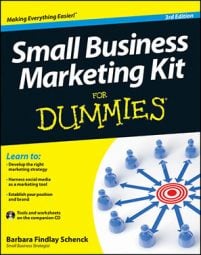A small business owner may hesitate to raise prices, but often prices may need to be increased in order for a small business to remain viable. Your customers may resist or barely register price hikes. Their reaction largely depends on how you announce the change.
One of the worst approaches is to simply raise prices with a take-it-or-leave-it announcement. Far better is to include new pricing as part of a menu of pricing options, following these tips:
Accompany price hikes with lower-priced alternatives. Examples include bulk-purchase prices, slow-hour or slow-season rates, and bundled product packages that provide a discount in return for the larger transaction.
Announce a new range of products instead of simply high- and low-priced options. Research shows that, though customers often opt for the lower of two price levels, when three price levels are provided, they choose the mid-range or upper level rather than the least expensive.
Give customers choices by unbundling all-inclusive products. By presenting product components and service agreements as self-standing offerings, customers can self-tailor a lower-priced offering.
Give advance notice of price increases. In service businesses, don’t make customers discover increases on their invoices. Allow them time to accommodate new pricing in their budgets. In retail businesses, give customers the opportunity to stock up before price hikes take effect.
Believe in your pricing. Especially when you raise prices, be certain that your pricing is a fair reflection of your product’s cost and value. Then instill that belief throughout your business.
The way you present prices can inspire your prospects — or confuse or underwhelm them. Use the table and the following advice to show your prices in the most favorable light:
Don’t let your price presentation get too complex. The table provides examples for presenting prices in a straightforward, visually attractive manner that communicates clearly without misleading consumers.
Do make the price compelling. In a world of outlet malls, online bargains, and warehouse stores, “10 percent off” isn’t considered a deal.
Do support pricing announcements with positive benefits your product promises to deliver. Price alone is never reason enough to buy.
| Do | Don’t | Why |
|---|---|---|
| Announcing a new St. Louis number to remember — $89 per night | We’ve just cut our nightly rates — $89 midweek; some restrictions apply | The first approach makes the deal sound noteworthy, whereas the second approach provides no positive rationale and implies that “small print applies.” |
| Sofa and loveseat $1,995 | Sofa and loveseat $1,995.00 | When prices are more than $100, drop the decimal point and zeroes to lighten the effect. |
| 1/2 off second pair | 25% off two or more | Complicated discounts are uninspiring, and “1/2 off” sounds like double the discount of 25% off when you buy two. |
| Regularly $995; now $695 while supplies last | 30% off | 1/3 off sounds more compelling than 30% off, but showing a $300 reduction is stronger yet. “While supplies last” adds incentive and urgency. |
| $17.95; we pick up all shipping and handling | $14.95 plus shipping/handling | The word “plus” alerts the consumer that the price is only the beginning. Calculate and include shipping and handling to remove buyer concern and possible objection. |
| State and local taxes apply | State and local taxes extra | “Extra” goes into the same category as “plus” when it comes to pricing. |

